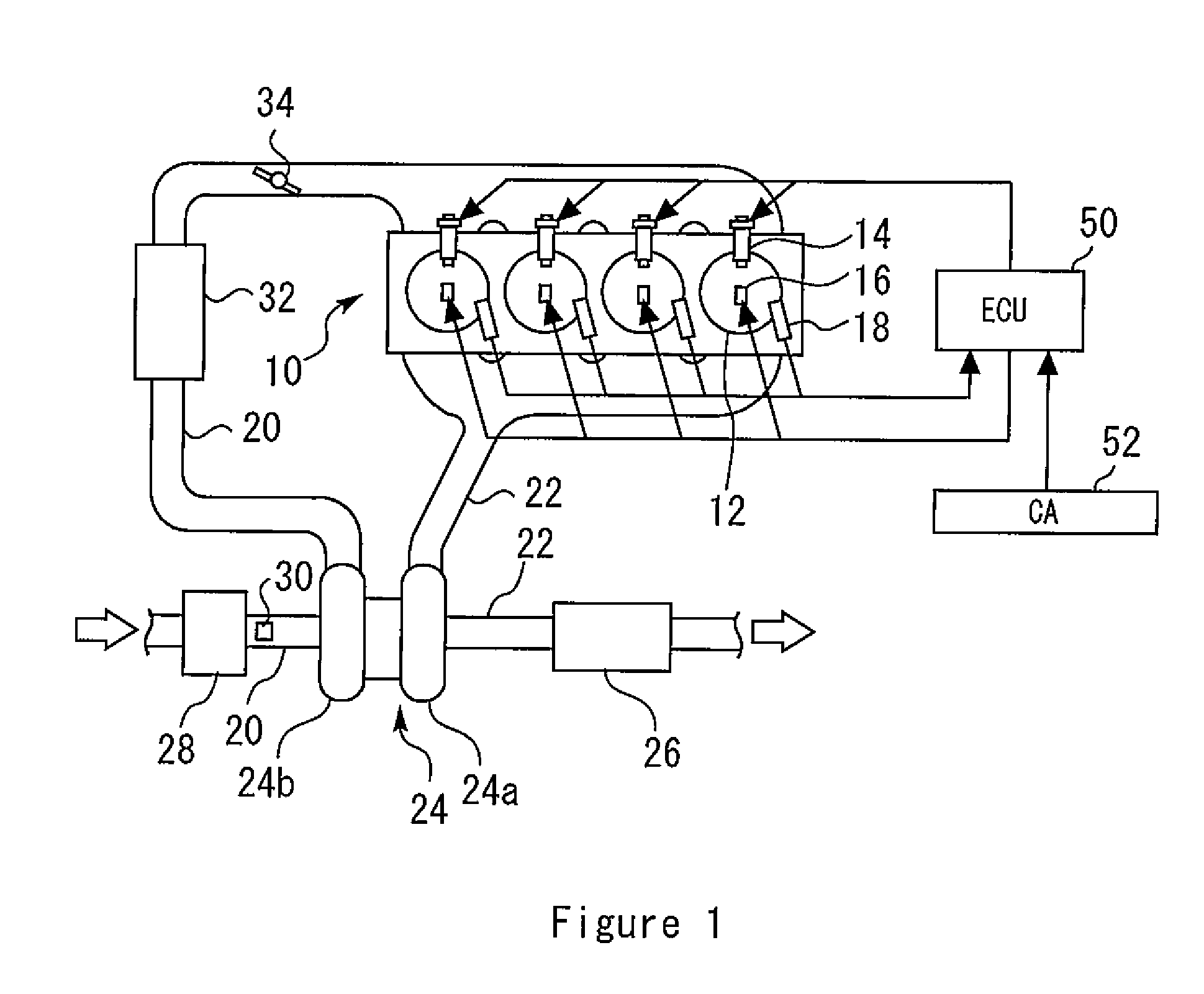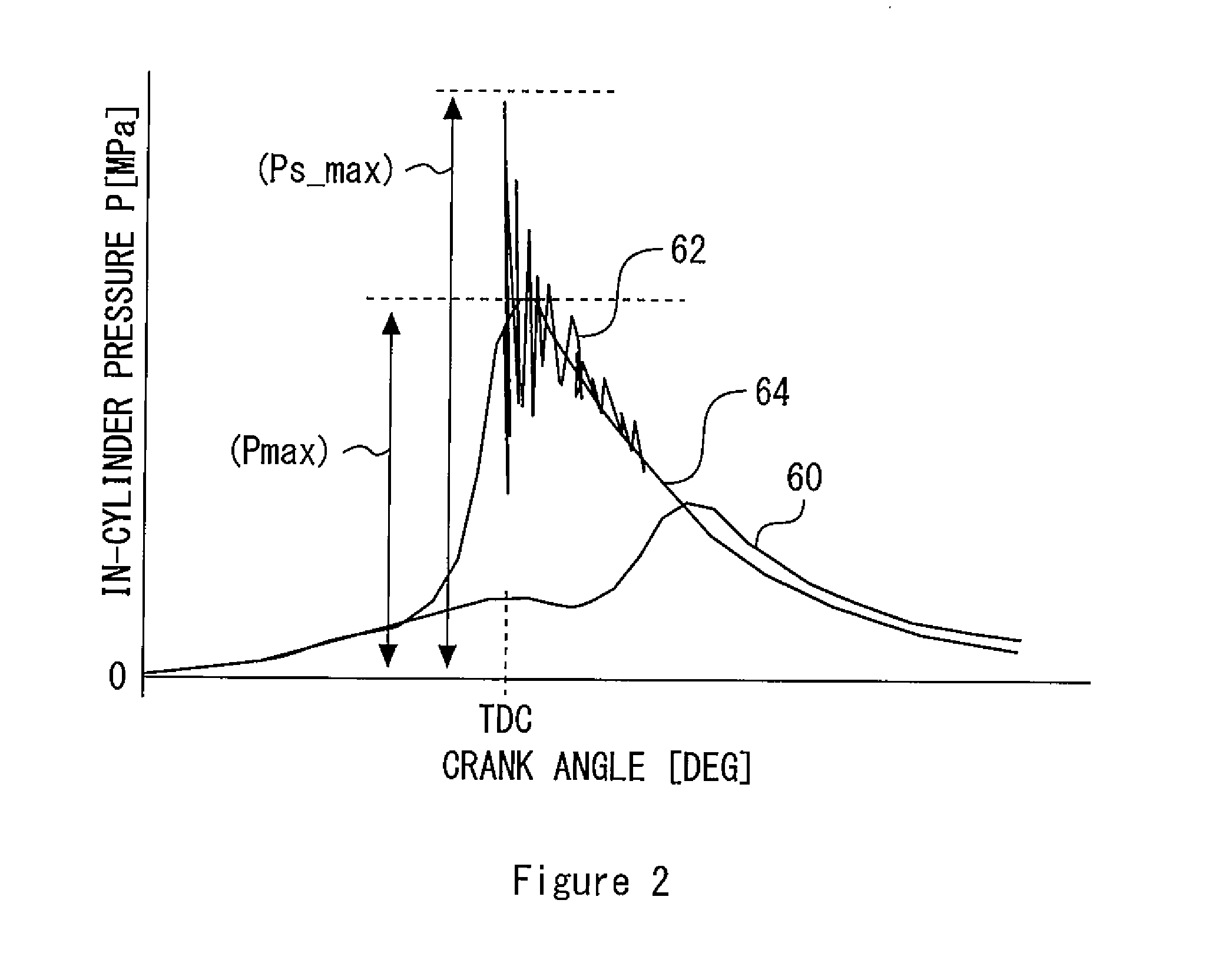Control device for internal combustion engine
a control device and internal combustion engine technology, applied in the direction of automatic ignition control, machines/engines, mechanical equipment, etc., to achieve the effect of increasing the control interval, and increasing the load of the operation region
- Summary
- Abstract
- Description
- Claims
- Application Information
AI Technical Summary
Benefits of technology
Problems solved by technology
Method used
Image
Examples
embodiment 1
System Configuration of Embodiment 1
[0038]FIG. 1 is a conceptual view for explaining a system configuration of embodiment 1 of the present invention. The system shown in FIG. 1 includes an internal combustion engine (hereinafter also simply called an engine) 10. The internal combustion engine 10 is an engine that is downsized by supercharging. The internal combustion engine 10 includes a plurality of cylinders 12. The internal combustion engine 10 shown in FIG. 1 is of an inline-four engine type, but in the present invention, the number of cylinders and cylinder arrangement are not limited thereto.
[0039]Each of the cylinders 12 is provided with an injector 14 that directly injects fuel into the cylinder (a combustion chamber), an ignition plug 16 for igniting an air-fuel mixture, and an in-cylinder pressure sensor 18 that outputs a signal responsive to an in-cylinder pressure. To each of the cylinders 12, an intake passage 20 and an exhaust passage 22 are connected.
[0040]An exhaust ...
embodiment 2
System Configuration of Embodiment 2
[0063]Next, embodiment 2 of the present invention will be described with reference to FIG. 6. In a system of the present embodiment, the ECU 50 includes a second deposit removal control function that will be described later, in addition to the configuration of embodiment 1.
[Characteristic Function in Embodiment 2]
[0064]The deposit removal control of embodiment 1 is executed when the load of the operation region is higher than the lower limit load of the forceful knock enabling region. Meanwhile, the deposit removal control is not executed when the load of the operation region is lower than the lower limit load of the forceful knock enabling region. Therefore, if an operation in the lower load region than the forceful knock enabling region, namely, in the region where knocking does not occur continues for a long time period, a large amount of deposit is accumulated in the cylinders.
(Second Deposit Removal Control Function)
[0065]Therefore, the ECU 5...
embodiment 3
System Configuration of Embodiment 3
[0070]Next, embodiment 3 of the present invention will be described with reference to FIG. 7 to FIG. 10. In a system of the present embodiment, the ECU 50 includes a third deposit removal control function that will be described later, in addition to the configuration of embodiment 1 or 2.
[Characteristic Function in Embodiment 3]
[0071]FIG. 7 is a diagram showing a change of a thickness of a piston deposit film in a case of executing the deposit removal control described in embodiment 1. A broken line 68 represents a criteria at which pre-ignition due to deposit occurs. A solid line 74 expresses a change of a thickness of a piston deposit film at a time of using ordinary fuel, whereas a solid line 76 expresses a change of a thickness of a piston deposit film at a time of using inferior fuel. As shown by the solid line 76, at the time of using inferior fuel, a deposit accumulation amount increases as compared with at the time of using ordinary fuel, ...
PUM
 Login to View More
Login to View More Abstract
Description
Claims
Application Information
 Login to View More
Login to View More - R&D
- Intellectual Property
- Life Sciences
- Materials
- Tech Scout
- Unparalleled Data Quality
- Higher Quality Content
- 60% Fewer Hallucinations
Browse by: Latest US Patents, China's latest patents, Technical Efficacy Thesaurus, Application Domain, Technology Topic, Popular Technical Reports.
© 2025 PatSnap. All rights reserved.Legal|Privacy policy|Modern Slavery Act Transparency Statement|Sitemap|About US| Contact US: help@patsnap.com



